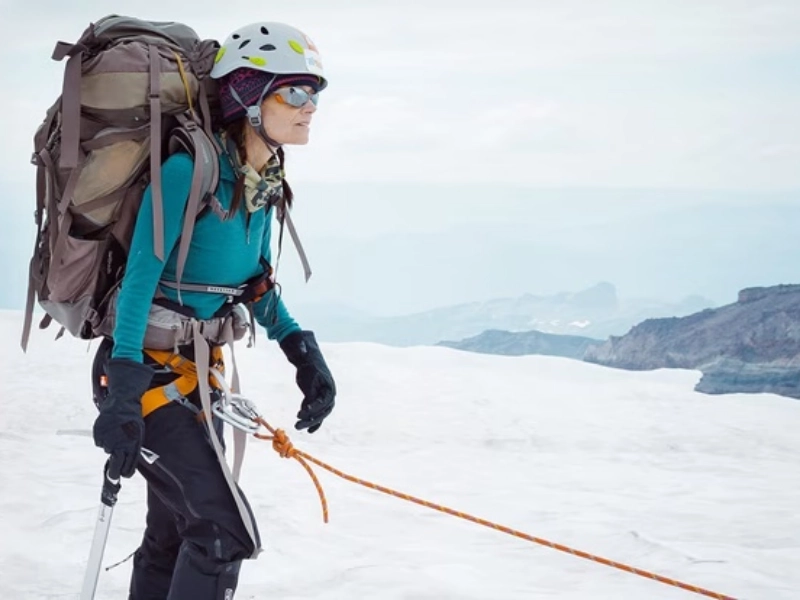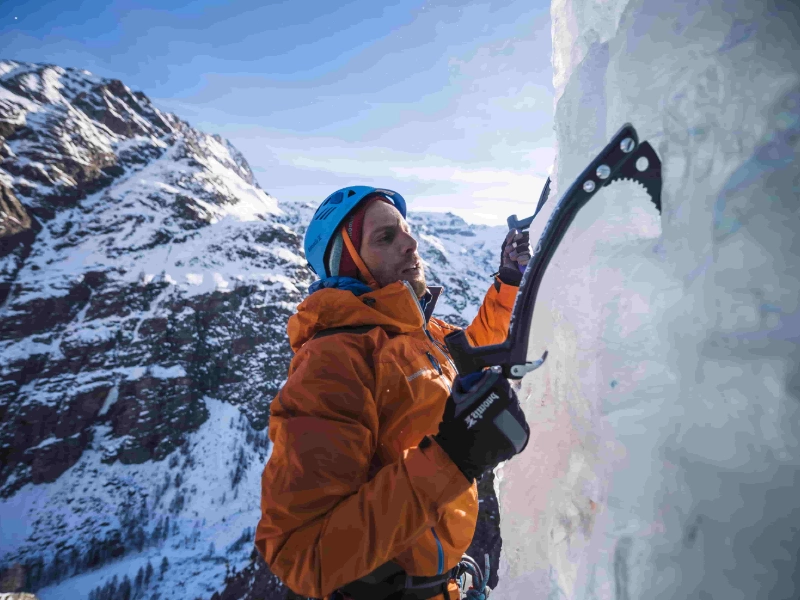Strengthening the core and main leg muscles, as well as enhancing balance, should be the main goals of training for mountain climbing. Completing acclimatization exercises and traveling to high elevations several days ahead of schedule are crucial components of altitude preparation. For mountain climbers, endurance is the most crucial fitness component. Walking hills frequently is the best approach to increasing endurance.
 A great way to enjoy the outdoors and get some exercise is to climb a mountain. Additionally, it can support better mental wellness. Through conquering the mental and physical obstacles of climbing, you can cultivate a more fearless mindset, learn to overcome fears, gain self-confidence, and gain emotional control. This can assist you in overcoming other challenges in your life.
Climbing mountains can also increase your range of motion and reduce your chance of experiencing stiffness and soreness in your joints. Better posture and balance are also correlated with increased flexibility. In fact, it can lessen stress.
Nonetheless, you ought to see a physician prior to embarking on a mountain ascent. It's safe for most people to spend time in the mountains, but some physicians advise against it if they have lung or heart issues. As long as they are under their doctors' supervision while in the mountains, those with serious conditions are also permitted to travel.
A great way to enjoy the outdoors and get some exercise is to climb a mountain. Additionally, it can support better mental wellness. Through conquering the mental and physical obstacles of climbing, you can cultivate a more fearless mindset, learn to overcome fears, gain self-confidence, and gain emotional control. This can assist you in overcoming other challenges in your life.
Climbing mountains can also increase your range of motion and reduce your chance of experiencing stiffness and soreness in your joints. Better posture and balance are also correlated with increased flexibility. In fact, it can lessen stress.
Nonetheless, you ought to see a physician prior to embarking on a mountain ascent. It's safe for most people to spend time in the mountains, but some physicians advise against it if they have lung or heart issues. As long as they are under their doctors' supervision while in the mountains, those with serious conditions are also permitted to travel.
 One of the most difficult things you can do is climb a mountain. It demands a great deal of physical stamina, mental clarity, and physical strength. You'll discover how to keep things in perspective and avoid becoming overpowered by the obstacles in your path.
Increasing your strength and endurance requires regular training. Planks, triceps dips, lunges, and squats should all be part of your exercise regimen. You can prevent injuries and improve your flexibility with these workouts. Moreover, you should perform three aerobic workouts a week to increase your endurance.
You can prepare for your climb with the aid of an effective training regimen. It's critical to establish and adhere to a defined schedule. Setting little targets will encourage you to stay on course even in the face of obstacles. It's crucial to keep a good outlook and never forget why you initially embarked on this adventure.
One of the most difficult things you can do is climb a mountain. It demands a great deal of physical stamina, mental clarity, and physical strength. You'll discover how to keep things in perspective and avoid becoming overpowered by the obstacles in your path.
Increasing your strength and endurance requires regular training. Planks, triceps dips, lunges, and squats should all be part of your exercise regimen. You can prevent injuries and improve your flexibility with these workouts. Moreover, you should perform three aerobic workouts a week to increase your endurance.
You can prepare for your climb with the aid of an effective training regimen. It's critical to establish and adhere to a defined schedule. Setting little targets will encourage you to stay on course even in the face of obstacles. It's crucial to keep a good outlook and never forget why you initially embarked on this adventure.
 Climbing mountains is an excellent way to stay physically healthy. It enhances joint flexibility and strengthens your arms, legs, and core. Additionally, it enhances coordination and balance. This exercise is particularly beneficial for those who have lower back issues. Additionally, it supports restful sleep patterns and aids in stress reduction.
Mountain climbing's physical difficulties can aid in the development of your mental toughness and self-assurance. Pacing oneself and establishing little goals are crucial. It's important to remember not to overextend yourself because this can result in fatigue and overexertion.
To strengthen your muscles if you're new to mountain climbing, attempt a simpler variation of this exercise. Start by assuming a plank posture, equally distributing your weight between your hands and feet. Your legs should then be quickly brought into and out of the plank position. Do this for one minute, or however many repetitions you choose to do. It is not advised for people with pelvic or shoulder issues to perform this workout.
Climbing mountains is an excellent way to stay physically healthy. It enhances joint flexibility and strengthens your arms, legs, and core. Additionally, it enhances coordination and balance. This exercise is particularly beneficial for those who have lower back issues. Additionally, it supports restful sleep patterns and aids in stress reduction.
Mountain climbing's physical difficulties can aid in the development of your mental toughness and self-assurance. Pacing oneself and establishing little goals are crucial. It's important to remember not to overextend yourself because this can result in fatigue and overexertion.
To strengthen your muscles if you're new to mountain climbing, attempt a simpler variation of this exercise. Start by assuming a plank posture, equally distributing your weight between your hands and feet. Your legs should then be quickly brought into and out of the plank position. Do this for one minute, or however many repetitions you choose to do. It is not advised for people with pelvic or shoulder issues to perform this workout.
 Climbing mountains raises blood oxygen levels, enhances balance, hand-eye coordination, and bone density, in addition to burning calories. It can also aid in muscular tone and weight loss. But if you want to stay up with the rest of your climbing group, it's crucial that you begin your training prior to your climb.
Mountain climbing may be a deeply fulfilling activity for those who like being in nature and challenging their physical limits. It can help you develop a brave mindset and teach you how to face your worries. It can also help you learn how to handle failures and put challenging circumstances into perspective.
Traditional climbing involves using mechanical tools to help you climb a mountain. These tools are placed on the rock face. Reaching the holds can be quite taxing and demand a great deal of flexibility. More flexible people are more resilient to physical stress and typically have less joint pain and stiffness.
Climbing mountains raises blood oxygen levels, enhances balance, hand-eye coordination, and bone density, in addition to burning calories. It can also aid in muscular tone and weight loss. But if you want to stay up with the rest of your climbing group, it's crucial that you begin your training prior to your climb.
Mountain climbing may be a deeply fulfilling activity for those who like being in nature and challenging their physical limits. It can help you develop a brave mindset and teach you how to face your worries. It can also help you learn how to handle failures and put challenging circumstances into perspective.
Traditional climbing involves using mechanical tools to help you climb a mountain. These tools are placed on the rock face. Reaching the holds can be quite taxing and demand a great deal of flexibility. More flexible people are more resilient to physical stress and typically have less joint pain and stiffness.